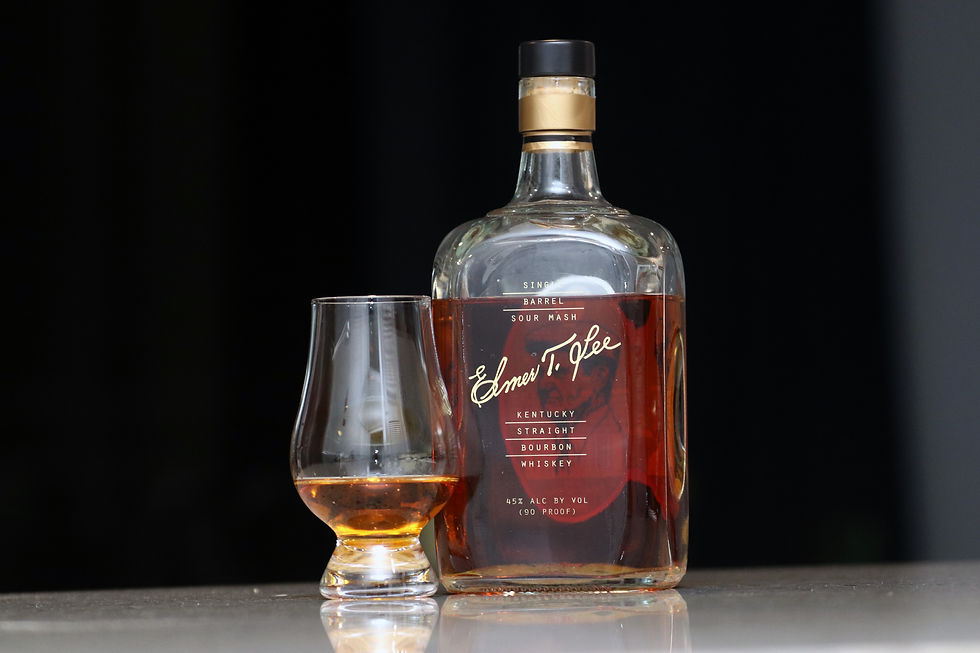A Taste of Kentucky
- L&C

- May 7, 2018
- 3 min read
A Review of 1792 Ridgemont Reserve (Small Batch)

After two weeks of Scotch Whisky, it’s time to journey closer to home and delve into American Whiskey. Bourbon is perhaps the quintessential American drink, with countless brands distributed globally. Yet while most of us have tried bourbon whiskey by itself or in a cocktail, the history and significance of Bourbon is less well known. We’ll take a look at this American icon and try a bottle of a more recent brand to come to market.
Bourbon has an origin story that reads like a pioneer legend. No one seems to have a definitive idea who was the first to establish the formula and process for bourbon whiskey, and the history of the major distilleries is full of mergers, spin-offs, and restarts. Conversely, the rules for what can be called proper bourbon whiskey in the US are very specific. Among the conditions are a couple that we’ll highlight:
The mash bill (the grain mixture used to distill) must be made up of at least 51% corn
The spirit must be aged in new American oak barrels that have been freshly charred
This means the recipe and cask type are more restrictive relative to other whiskeys. The remainder of the mash bill is flexible, however, and many distilleries use rye or even malted barley to complete the mix. Bourbon is also associated with Bourbon county in Kentucky, and most of the iconic brands hail from this area. One more interesting note is that bourbon has no minimum age requirement. So you can imagine that distilleries find ways to create differentiation even with the cask and mash bill restrictions.
We admit we’re less experienced with bourbon than with single malt Scotch whisky. Having such large prominent brands gave us an impression that most bourbon was mid-range quality and was very similar. Nevertheless, as we’ve discovered more niche and new or re-launched brands we’ve come to appreciate the nuances offered by the different distilleries and expressions. In addition, bourbon has become a feature of the craft spirits industry in the US and it seems like there are new brands emerging every month. For this week we’ll dive into a brand that is less than 20 years old.
1792 Ridgemont Reserve (recently rebranded as 1792 Small Batch)
The 1792 brand is produced by the Barton distillery, a historic facility that has been around since 1897. Barton currently produces the Small Batch as their flagship along with several more limited expressions. The company indicates that the mash bill for 1792 includes a lot of rye in the remaining 49% that isn’t legally required to be corn, which can typically add a lot of spice and pepper flavor to the whiskey.
On the Eyes:
The 1792 bottle has an uncommon shape for a whiskey. It reminds us of a cognac or rum bottle, and the burlap detailing on the neck reinforces the comparison to some notable rum brands. Similar to our review of the Singleton single malt, 1792 has been rebranded recently (our bottle utilizes the old branding); we like the brand's more recent aesthetics which utilizes a similar bottle shape, but the text treatment has been updated and evokes a clean, art-deco feel.
In the glass, the bourbon has the rich color of maple syrup. Giving the glass a swirl, the whiskey is medium bodied and the legs quickly retreat.

On the Nose:
The initial aroma is of warm brown sugar accompanied by more than a dash of pepper. Once we nosed the glass again one of us was reminded of the scent of fresh honey glazed cornbread (and that is probably as focused of an analogy as we could find).
To the Taste:
Like most bourbons we’ve tried, the initial flavor of 1792 brings to mind grilled corn on the cob. This is no accident, as the majority of the mash bill is required to be corn, and with the char from the barrels, you would almost expect this flavor. However, it’s after this point that bourbons can really differentiate themselves. For 1792, the grilled corn is followed by a heavy dose of dry, black pepper flavor. Our guess is that this derives from the high amount of rye used to complete the mash bill.
And the Finish:
As the dram settled, the flavor profile faded into sweetness. It was subtle, but the finish matched the visuals—a maple syrup closing that doesn’t linger long.
Overall, 1792 is an excellent and straightforward bourbon. The principal twist in the story might be the high use of rye which is very apparent on the nose and in the flavor profile. 1792 delivers a clean and understated flavor that is at the same time not one dimensional. We found ourselves taking more sips to confirm bits of different flavors, and that is always a good sign for any whiskey.
Cheers,
L&C





Comments